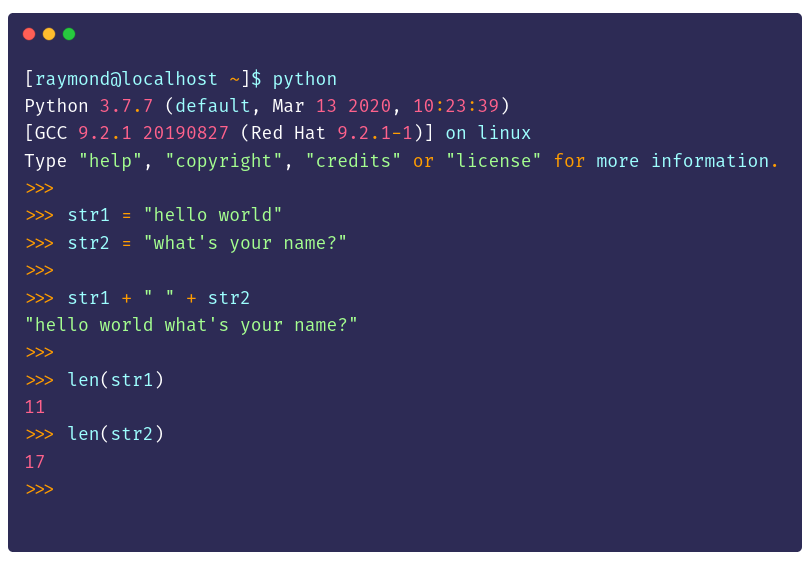


#PYTHON STRING DECODE CODE#
Representing Unicode There are two standard ways to represent a Unicode string in TensorFlow: string scalar where the sequence of code points is encoded using a known character encoding. Example: Converting a String to Unicode Characters If you use Python to construct strings, note that string literals are Unicode-encoded by default. We will take a look at it in this article and you can use whichever you see fit in your programs. We can decode a Unicode string to a normal one using in-built libraries in python. Converting normal string to Unicode strings Example 1 : In this example we can see that by using code () method, we are able to get the decoded string which can be in binary form by using this method. This method is now the standard Unicode encoding for python.Īlso check out: Converting Base-2 Binary Number Strings to Integers in Python. Syntax : code (bstring) Return : Return the decoded string. It defaults to the default string encoding.
#PYTHON STRING DECODE 32 BIT#
It is also portable unlike the 32 bit encoding which was not portable. The decode () method decodes the string using the codec registered for encoding. Lost data can be resynchronized and it is possible to determine the start and end points of utf-8 texts. It has a number of advantages over using the 32 bit encoding in a system’s CPU such as it can handle code point values and also ASCII strings are also valid utf-8 text.īyte-ordering issues are resolved when utf-8 encoding is used. Python string encode () function is used to encode the string using the provided encoding. “UTF” stands for Unicode Transformation format and the “8” represents the 8-bit values that are used in this format for encoding. Unicode characters can be converted into 8-bit bytes and this process can be done in the memory of a computer system, also known as, encoding. Therefore, a Unicode string is a collection of code points. A code point can have any value between 0 and 0x10FFFF (about 1.1 million values). Python’s encode and decode methods are used to encode and decode the input string, using a given encoding. In the Unicode standard, characters (the smallest components of a string) are represented as code points. The Unicode library is continuously updated with the latest characters and symbols It’s essential for maintaining uniformity and accommodating special characters in programming languages. Unicode is a format that assigns each character used in human languages a unique code. It is a type of specification that assigns each character used in human languages a specific value or code. Unicode is a format in which various characters in a string are given a unique identity. In python, many messages including errors or inputs and outputs are internationalized so that people who do not know English can also program in it.


 0 kommentar(er)
0 kommentar(er)
